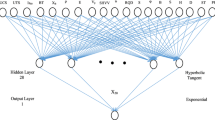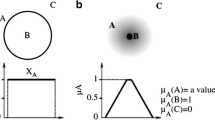Abstract
Poor fragmentation is one of the most side effects induced by blasting operations. Therefore, risk assessment and prediction of rock fragmentation are essential to reduce the mentioned effects. In the present study, an attempt has been made to evaluate the risk associated with rock fragmentation as well as its prediction at Sarcheshmeh copper mine, Iran, proposing the rock engineering system (RES) technique. A total number of 52 blasting events were collected and considered and the values of 10 key effective parameters in rock fragmentation were carefully measured in the mine. These 10 key parameters were only related to blasting design and rock mass properties were not considered in the analysis of this study due to some limitations regarding their measurements in the mine. The RES result showed that the level of overall risk, based on the considered blast events, is in the range of medium–high. Furthermore, it was found that the burden is the most interaction factor in the rock fragmentation. In case of rock fragmentation prediction, all of datasets were divided randomly to training and testing datasets for proposing RES model. For comparison purpose, non-linear multiple regression (NLMR) was also employed for estimating rock fragmentation. The performances of the proposed predictive models were examined according to three performance indices, i.e. coefficient of determination (R 2), root mean square error (RMSE) and variance account for (VAF). The obtained results of this study indicated that the RES is a reliable method to predict rock fragmentation with a higher degree of accuracy in comparison to NLMR model. For instance, RMSE values of 1.95 and 4.002 for testing datasets of RES and NLMR models, respectively, suggest the superiority of the RES model in predicting rock fragmentation compared to other developed model.










Similar content being viewed by others
References
Bahrami A, Monjezi M, Goshtasbi K, Ghazvinian A (2011) Prediction of rock fragmentation due to blasting using artificial neural network. Eng Comput 27:177–181
Bahri Najafi A, Saeedi GR, Ebrahimi Farsangi MA (2014) Risk analysis and prediction of out-of-seam dilution in longwall mining. Int J Rock Mech Min Sci 70:115–122
Bazin D, Hubner H (1969) La region cuprifere a gisements porphyry de Kerman (Iran). Miner Deposita 74:200–212
Benardos AG, Kaliampakos DC (2004) A methodology for assessing geotechnical hazards for TBM tunnelling—illustrated by the Athens Metro, Greece. Int J Rock Mech Min Sci 41:987–999
Castaldini D, Genevois R, Panizza M, Puccinelli A, Berti M, Simoni A (1998) An integrated approach for analyzing earthquake induced surface effects: a case study from the Northern Apennins. Italy. J Geodyn 26(2–4):413–441
Ceryan N, Ceryan S (2008) An application of the interaction matrices method for slope failure susceptibility zoning: dogankent settlement area (Giresun, NE Turkey). Bull Eng Geol Environ 67(3):375–385
Ceryan N, Okkan U, Kesimal A (2013) Prediction of unconfined compressive strength of carbonate rocks using artificial neural networks. Environ Earth Sci 68:807–819
Cunningham CVB (1983) The Kuz-Ram model for prediction of fragmentation from blasting. 1st International Symposium on Rock Fragmentation by Blasting, pp 439–453
Ebrahimi E, Monjezi M, Khalesi MR, Jahed Armaghani D (2015) Prediction and optimization of back-break and rock fragmentation using an artificial neural network and a bee colony algorithm. Bull Eng Geol Environ. doi:10.1007/s10064-015-0720-2
Esmaeili M, Salimi A, Drebenstedt C, Abbaszadeh M, Aghajani Bazzazi A (2014) Application of PCA, SVR, and ANFIS for modeling of rock fragmentation. Arab J Geosci. doi:10.1007/s12517-014-1677-3
Faramarzi F, Mansouri H, Ebrahimi Farsangi MA (2013a) A rock engineering systems based model to predict rock fragmentation by blasting. Int J Rock Mech Min Sci 60:82–94
Faramarzi F, Ebrahimi Farsangi MA, Mansouri H (2013b) An RES based model for risk assessment and prediction of backbreak in bench blasting. Rock Mech Rock Eng 46:877–887
Faramarzi F, Mansouri H, Ebrahimi Farsangi MA (2014) Development of rock engineering systems-based models for flyrock risk analysis and prediction of flyrock distance in surface blasting. Rock Mech Rock Eng 47:1291–1306
Frough O, Torabi SR (2013) An application of rock engineering systems for estimating TBM downtimes. Eng Geol 157:112–123
Ghose AK, Joshi A (2013) Blasting in mines—New trends. Taylor & Francis Group, London, p 104
Hasanipanah M, Monjezi M, Shahnazar A, Jahed Armaghani D, Farazmand A (2015) Feasibility of indirect determination of blast induced ground vibration based on support vector machine. Measurement 75:289–297
Hjelmberg H (1983) Some ideas on how to improve calculations of the fragment size distribution in bench blasting. 1st International Symposium on Rock Fragmentation by Blasting, pp 469–494
Hudson JA (1992) Rock engineering systems: theory and practice. Ellis Horwood, Chichester
Jahed Armaghani D, Hasanipanah M, Tonnizam Mohamad E (2015a) A combination of the ICA-ANN model to predict air-overpressure resulting from blasting. Eng Comput. doi:10.1007/s00366-015-0408-z
Jahed Armaghani D, Tonnizam Mohamad E, Hajihassani M, Yagiz S, Motaghedi H (2015b) Application of several non-linear prediction tools for estimating uniaxial compressive strength of granitic rocks and comparison of their performances. Eng Comput. doi:10.1007/s00366-015-0410-
Jahed Armaghani D, Hajihassani M, Monjezi M, Mohamad ET, Marto A, Moghaddam MR (2015c) Application of two intelligent systems in predicting environmental impacts of quarry blasting. Arab J Geosci. doi:10.1007/s12517-015-1908-2
Karami A, Afiuni-Zadeh S (2013) Sizing of rock fragmentation modeling due to bench blasting using adaptive neuro-fuzzy inference system (ANFIS). Int J Min Sci Technol 23(6):809–813
Kuznetsov VM (1973) The mean diameter of the fragments formed by blasting rock. Sov Min Sci 9(2):144–148
Latham JP, Lu P (1999) Development of an assessment system for the blastability of rock masses. Int J Rock Mech Min Sci 36:41–55
Looney CG (1996) Advances in feed-forward neural networks: demystifying knowledge acquiring black boxes. IEEE Trans Knowl Data Eng 8(2):211–226
Marto A, Hajihassani M, Jahed Armaghani D, Tonnizam Mohamad E, Makhtar AM (2014) A novel approach for blast-induced flyrock prediction based on imperialist competitive algorithm and artificial neural network. Scic World J 2014(5):643715. doi:10.1155/2014/643715
Monjezi M, Rezaei M, Yazdian Varjani A (2009) Prediction of rock fragmentation due to blasting in Gol-E-Gohar iron mine using fuzzy logic. Int J Rock Mech Min Sci 46:1273–1280
Monjezi M, Rezaei M, Yazdian A (2010) Prediction of backbreak in open-pit blasting using fuzzy set theory. Expert Syst Appl 37:2637–2643
Monjezi M, Hasanipanah M, Khandelwal M (2013) Evaluation and prediction of blast-induced ground vibration at Shur River Dam, Iran, by artificial neural network. Neural Comput Appl 22:1637–1643
Morin AM, Ficarazzo F (2006) Monte Carlo simulation as a tool to predict blasting fragmentation based on the Kuz-Ram model. Comput Geosci 32:352–359
Rafiee R, Ataei M, Khalokakaie R, Jalali SME, Sereshki F (2015) Determination and assessment of parameters influencing rock mass cavability in block caving mines using the probabilistic rock engineering system. Rock Mech Rock Eng 48(3):1207–1220
Roy PP, Dhar BB (1996) Fragmentation analyzing scale-A new tool for breakage assessment. Proceedings 5th International Symposium on Rock Fragmentation by blasting-FRAGBLAST 5, Balkema, Rotterdam
Saeidi O, Azadmehr A, Torabi SR (2013) Development of a rock groutability index based on the Rock Engineering Systems (res): a case study. Indian Geotech J. doi:10.1007/s40098-013-0068-0
Saffari A, Sereshki F, Ataei M, Ghanbari K (2013) Applying Rock Engineering Systems (RES) approach to evaluate and classify the coal spontaneous combustion potential in Eastern Alborz coal mines. Int J Min Geo Eng 47:115–127
Sayadi A, Monjezi M, Talebi N, Khandelwal M (2013) A comparative study on the application of various artificial neural networks to simultaneous prediction of rock fragmentation and backbreak. J Rock Mech Geotech Eng 5(4):318–324
Shams S, Monjezi M, Johari Majd V, Jahed Armaghani D (2015) Application of fuzzy inference system for prediction of rock fragmentation induced by blasting, Arab J Geosci. doi:10.1007/s12517-015-1952-y
Shirani Faradonbeh R, Monjezi M, Jahed Armaghani D (2015) Genetic programing and non-linear multiple regression techniques to predict backbreak in blasting operation. Eng Comput. doi:10.1007/s00366-015-0404-3
Singh PK, Sinha A (2013) Rock fragmentation by blasting, fragblast 10. Taylor & Francis Group, London, p 184
SPSS Inc (2007) SPSS for Windows (Version 160). SPSS Inc, Chicago
Stagg MS, Otterness RE, Siskind DE (1992) Effects of blasting practices on fragmentation. In: Proceedings of the 33rd US. Symposium on Rock Mechanics, pp 313–322
Swingler K (1996) Applying neural networks: a practical guide. Academic Press, New York
Thornton D, Kanchibotla SS, Brunton I (2002) Modelling the impact of rock mass and blast design variation on blast fragmentation. Int J Blast Fragment 6(2):169–1168
Tonnizam Mohamad E, Hajihassani M, Jahed Armaghani D, Marto A (2012) Simulation of blasting-induced air overpressure by means of artificial neural networks. Int Rev Model Simul 5(6):2501–2506
Tonnizam Mohamad E, Jahed Armaghani D, Hasanipanah M, Murlidhar BR, Asmawisham Alel MN (2016) Estimation of air-overpressure produced by blasting operation through a neuro-genetic technique. Environ Earth Sci 75:174
Yagiz S, Gokceoglu C (2010) Application of fuzzy inference system and nonlinear regression models for predicting rock brittleness. Expert Sys Appl 37(3):2265–2272
Yagiz S, Gokceoglu C, Sezer E, Iplikci S (2009) Application of two non-linear prediction tools to the estimation of tunnel boring machine performance. Eng Appl Artif Intell 22(4):808–814
Zhang LQ, Yang ZF, Liao QL, Chen J (2004) An application of the rock engineering systems (RES) methodology in rockfall hazard assessment on the Chengdu-Lhasa highway, China. Int J Rock Mech Min Sci 41(3):833–838
Zheming X, Mohanty B, Heping Z (2007) Numerical investigation of blasting-induced crack initiation and propagation in rocks. Int J Rock Mech Min Sci 44:412–424
Zheming Z, Heping X, Mohanty B (2008) Numerical investigation of blasting-induced damage in cylindrical rocks. Int J Rock Mech Min Sci 45:111–121
Author information
Authors and Affiliations
Corresponding author
Rights and permissions
About this article
Cite this article
Hasanipanah, M., Jahed Armaghani, D., Monjezi, M. et al. Risk assessment and prediction of rock fragmentation produced by blasting operation: a rock engineering system. Environ Earth Sci 75, 808 (2016). https://doi.org/10.1007/s12665-016-5503-y
Received:
Accepted:
Published:
DOI: https://doi.org/10.1007/s12665-016-5503-y




